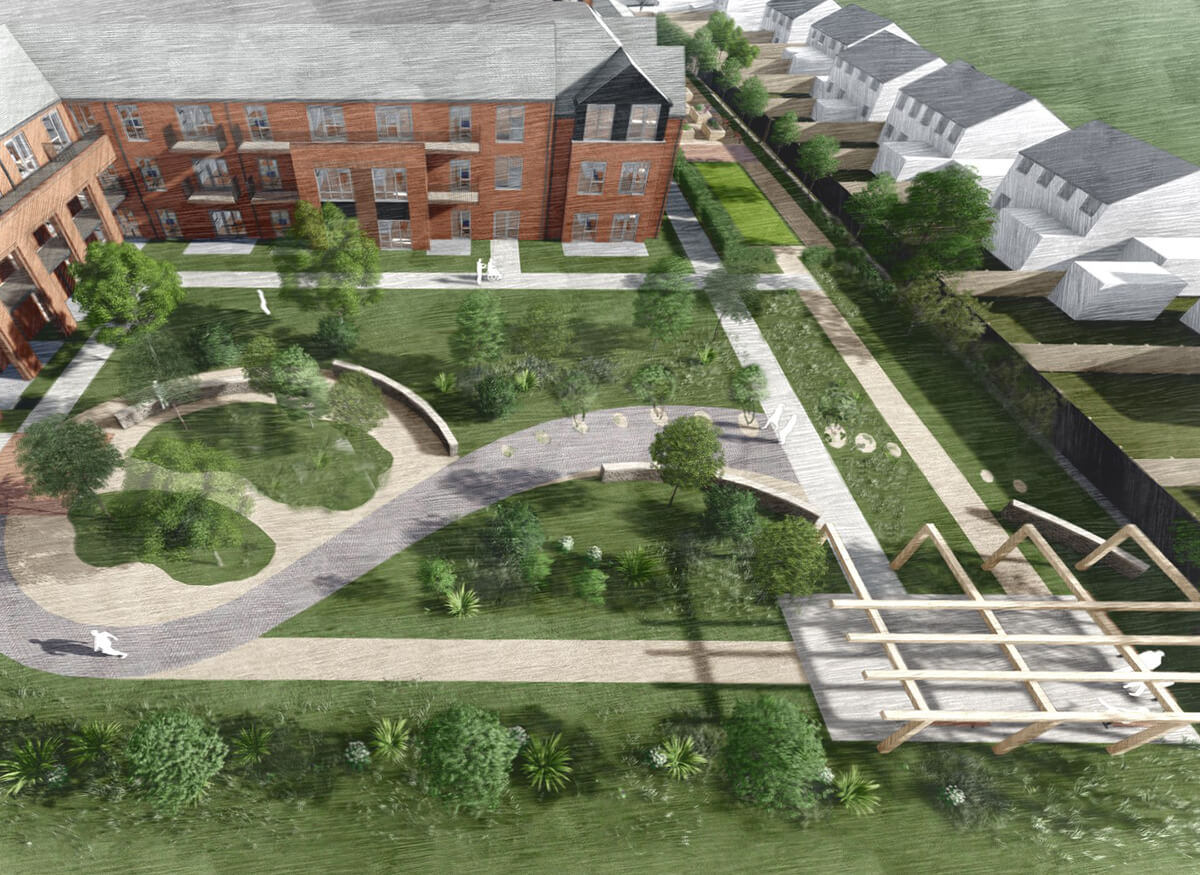Extra care facilities, or assisted living accommodation, have become increasingly popular in recent years as we experience a rapid rise in those of retirement age and those who require additional care in our society. This trend is set to continue to 2030 and beyond as we live longer. A concern of anyone considering extra care and the design of these facilities is about the extra care environment as a whole and in this article, we consider the benefits of extra care home garden design.
Age friendly environments with accommodation tailored to the needs and wishes of a growing older population are part of modern thinking on creating neighbourhoods, towns and cities which respond to societal and climate changes.
While predominantly aimed at older people, extra care housing is also increasingly being aimed at other groups such as adults with disabilities. They help to maintain independence in a community setting, while focusing on well-being and wellness of individuals, tailoring a specific environment for them.
In considering extra care, or assisted living arrangements, in many schemes, regardless of the mobility levels of residents, outdoor space is a major consideration. Aesthetics of the outdoor spaces are a clearly an important factor. One could argue that this is especially important at extra care homes, where residents with limited mobility can observe and enjoy natural beauty in their surroundings through a variety of natural flora and fauna which brings numerous wellbeing benefits. It’s important to ensure a long flowering season for maximum visual impact and ensure a strong evergreen structure endures during the winter.
As important as this is, is the ability to be involved within the environment and engaging residents through outdoor participation. Giving residents continued access and contact with nature is a key consideration of the design. What better than to be able to enjoy nature on your doorstep, while breaking up the day and giving a healthy focus on the outdoors? For that reason, space should be allowed for activities, such as working allotments and areas for games such as boules. Pathways through a variety of spaces, formal and informal should be allowed, connected by looping pathways around the building which are easy to negotiate.
Extra care gardens tend to be secured and protected and receive better management than open public realm. This tends to mean that more attention can be given to maintaining a more complex matrix of planting making them excellent opportunities for habitat and sensory gardens and the creation of plant diversity. For many, there’s nothing better than being able to observe wildlife going about their business, from birds, to bees and hedgehogs. This is a reason that we like to accommodate habitat gardens, along with fruit trees, where at all possible, in our designs.
The addition of animal houses, bird boxes and similar encourages wildlife to flourish in an oasis of natural beauty in city and suburb alike. Extra care homes are perfect opportunities for designing thriving habitat areas which can be securely managed and observed for the joy of residents.
We view garden design as the creation of mini ecosystems, rather than simply outdoor areas to be passively used and viewed.
Structural elements such as pergolas are useful to provide height, shade and contrast to the surroundings and a focus to gathering. They are also ideal to be lit at night where they become an unexpected striking feature.
Multi-faceted features are essential to ensure the maximum use and involvement of residents in the garden areas. This delivers many benefits far beyond the enjoyment of the outdoors.
If you are considering a garden design for an extra care facility or would like to discuss the use of outdoor space and design planning, please feel free to contact us.
An example of our work at an extra care facility can be seen at Bourke Gardens, Walkden and Woodpecker Close, Saughall Massie.

